Diseases of Bones and Joints
The adult human skeletal system has a complex architecture that includes 206 connected by cartilage, tendons and ligaments. The bony joints are of three types – immovable, slightly movable and freely movable. Ayurveda offers complete cure of the diseases of the bones and joints weather they are due to any local reason or have arisen out of some systemic etiology
Diseases of the Bones and Joints –
Bones carry us the whole way through our life. Right from the moment we are born, our skeletal tissues grow with us and give our body proper shape. Similarly our joints where two bones meet make out moments to happen. Over a lifetime both our bones and the joints are put under tremendous strain. Bone and joint weaken with age and a lot of wear and tear takes place in these body structures. Ayurveda deals with most of the diseases of skeletal system in its own way. Ancient texts are replete with references where proper lifestyle changes and treatment are discussed for the preventive and the curative management of the diseases occurring in bones and the joints.
Some of the main diseases related to the bones and the connective tissues are as under –
Osteoporosis/Osteopenia
– Osteoporosis and its less severe counterpart osteopenia, are conditions where the bones gradually become thinner, lose density and are more likely to fracture. Called Asthisaushirya in Ayurveda, this condition is considered to arise due to the faulty diet or to the hormonal imbalance or to the age related conditions.
Arthritis
– Literally meaning inflammation of the joint, arthritis can be of many types. Majority of patients visit the doctors with these three types of arthritis –
Rheumatoid Arthritis
– Whereas the modern medicine overwhelmingly, if not conclusively, finds rheumatoid arthritis to be an auto-immune disorder, ayurveda believes ‘ama’ or the post digestive toxins to be its main causative factor. Apart from the dietary reasons, ayurveda also refers to some other factors which in their own way are responsible for the formation of ‘ama’ in the body. They include infections and swellings, lack of exercise or opting for over-exercise especially after taking heavy and oily food, suppression of natural body urges, living in damp and squalid environments and confronting severe psychological upheavals like stress, anxiety and depression. Some of these known and yet many more unknown reasons help to generate ‘ama’, which propelled by the vitiated ‘vata’ goes to the different systems of the body to be settled in the joints of already vulnerable persons.
Gouty Arthritis
– Gout is a systemic disease and also one of the common form of arthritis caused by the accumulation of uric acid in the joints. Many centuries ago, Acharya Charaka while writing his famous compendium devoted a separate chapter to it. Known as ‘vata rakta’ or vata shonitam’ in ayurvedic parlance, gout affects mostly men between the age of 30 to 50 and is seen very rare in women until after the menopause.
Osteo-arthrits
– When we talk about osteoarthritis or OA, we refer to a condition which is characterised by degeneration of the articular cartilage and the formation of bony outgrowths at the edges of the affected joints. This condition occurs amongst elderly people of either sex, but may appear at any age in a joint which has been damaged by disease or injury. Ayurvedic texts have described osteoarthritis as ‘sandhigata vata’ and according to ancient perceptions it is the vitiated ‘vata’ which affects the joints and is responsible for the ensuing pathological changes. Osteoarthritis is often interpreted as ‘wear and tear’ of the joints.
Cervical Spondylitis
-It is a is a chronic degenerative condition of the cervical spine that affects the vertebrae and inter vertebral disks of the neck and sometimes affects the contents of spinal canal. With advancing age spondylosis is also known to affect multiple inter spaces and in broader sense is a form of osteoarthritis.
Low Backache
– Called Kati-shhoola in Ayurveda, it is a disease which occurs due to sitting for long hours, adopting wrong postures, getting injury and due to the weakness of muscles. With advancing age, the spine vertebrae also undergo osteoarthritis type of changes. As disc spaces are reduced, the bony margins clash with the corresponding vertebrae . Many times displaced intervertebral disc is the reason of acute or chronic low backache. Pain starting from lower back and extending up to the area of the finger of foot is known as Sciatica Lumbago Syndrome or Grudhrasi in Ayurveda is very painful disease which requires immediate treatment. Most of the cases very well to the Ayurvedic treatment and the regimen described by the physician.
Frozen Shoulder
– Known as Apabahuka in Ayurvedic parlance, frozen shoulder is marked by pain and restriction in the movement of the shoulder joint. Here the vitiated Vata dosha affects the shleshak kapha of the shoulder joint resulting in the painful movement and loss of muscles. The disease can affect persons of all age groups but elderly and the diabetic people have more incidence of reporting with frozen shoulder. The disease is very well treated by Ayurvedic treatment which includes medicine and some Panchakarma procures.
Ankylosing Spondylitis
– It is a chronic inflammatory disorder that primarily involves the sacroiliac joints and the axial skeleton. There is also a variable involvement of peripheral joints and articular structures. Musculoskeletal pain, stiffness, and immobility of spine due to AS is a major burden. Seeing the nature of the Ankylosing Spondylitis where involvement of the immune system is also involved, Ayurveda sees its management on the lines as rheumatoid Arthritis is treated.
